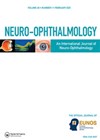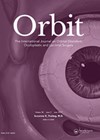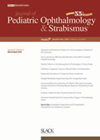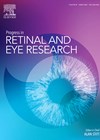
Journal Reviews
Hypothesis for poor visual outcomes in myeline oligodendrocyte glycoprotein-related optic neuritis after first attack
The authors present a retrospective case review with the aim of describing the group of patients with myelin-oligodendrocyte glycoprotein-associated optic neuritis (MOG-ON) who had poor visual outcomes following their first attack despite rapid treatment. The study was conducted at a...
Aetiology of painful ophthalmoplegia
Painful ophthalmoplegia is a clinical syndrome presenting with periorbital / hemi-cranial pain and ipsilateral ocular motor nerve palsies and can occur with numerous different diseases. In this study, the authors aimed to determine the final definite aetiology among patients with...
How common are carotid-cavernous fistulas and what are the neuro-ophthalmic manifestations?
The authors present a retrospective study using the Rochester Epidemiology Project database. The aim was to establish the incidence of carotid-cavernous fistulas (CCF) and outline the associated neuro-ophthalmic patterns. Cases were identified from the database using the following criteria: a...
Photophobia associated with migraine: Investigating associations with productivity
The aim of this study was to investigate an association between severe photophobia linked to migraine and reduced work productivity. Cases were extracted from the American Registry for Migraine Research (ARMR) with the following criteria: diagnosed with migraine, data available...
Developing a data registry for neuro-ophthalmology with quality assurance measures
The authors aimed to report the scope of neuro-ophthalmology clinics in Australia, referral patterns and develop a quality assurance framework for referrals. Cases were identified from a single tertiary neuro-ophthalmology centre. Data was prospectively collected into the National Neuro-ophthalmology Database...
Which cover test method is the best starting point for prescribing temporary prisms?
A retrospective review of medical records was completed, identifying consecutive patients prescribed Fresnel prisms for diplopia, assessed using both simultaneous prism and cover test (SPCT) and prism and alternate cover test (PACT) by a single orthoptist over a 36-month period....
Comparison of MRI finding in oculomotor cranial nerve palsies as a result of inflammation and ischaemia
This study aimed to explore the value of asymmetric enhancement of the cavernous sinus on MRI for differential diagnosis between ocular myasthenia gravis, ischemic or inflammatory oculomotor cranial nerve palsies. Three groups were recruited consecutively over a 30-month period and...
Oxymetazoline hydrochloride for improved symmetry in Graves’ disease
Oxymetazoline hydrochloride 0.1% ophthalmic solution has Food & Drug Administration (FDA) approval for use in involution ptosis. It is an alpha 1 agonist and partial alpha 2 agonist that stimulates Muller’s muscle to lift the lid. The authors of this...
Multiple sclerosis and the ocular manifestations
This population study retrospectively identified patients with multiple sclerosis (MS) over a 14-year period. The aim of the study was to report the frequency and severity of ocular conditions associated with MS. Cases were identified from the Rochester Epidemiology Project....
Improvement of visual acuity with dichoptic training for amblyopia
This study evaluated the effectiveness of dichoptic amblyopia treatment using the Bynocs AmblyGo programme in reversing various types of amblyopia in a retrospective cohort. At recruitment, all patients had demonstration of the treatment. Patients continued treatment at home via internet-connected...
Ground control to optic nerve – the space oddity to be studied
The authors explore the clinical entity that is known as Spaceflight Associated Neuro-ocular Syndrome (SANS). Its clinical characteristics include optic disc oedema, hyperopic refractive shifts, globe flattening, and chorioretinal folds, may pose a health risk for future space exploration. Understanding...
Covid-19 ophthalmopathy
Ocular involvement is not uncommon in patients with Covid-19. However, the incidence of Covid-19 ophthalmopathy is unclear. The authors present a prospective case series including 2445 consecutive cases presenting at a neuro-ophthalmology clinic during the last resurgence of SARS-CoV-2 infection....










